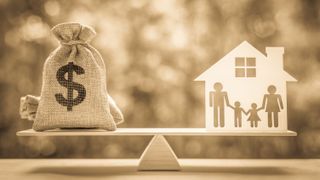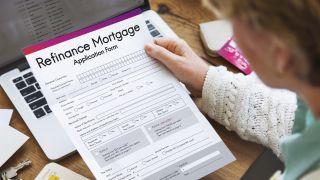More than four million Americans are currently not paying their mortgages as the coronavirus continues to impact the everyday finances of households across the U.S. According to the latest Mortgage Bankers Association (MBA) data, the share of mortgage loans in forbearance increased to 8.16% as of May 10, 2020, meaning 4.1 million homeowners are at least one month behind on their payments.
The latest figure represented a slight uptick on the 7.91% recorded the week before, but is almost 33 times higher than the 0.25% of mortgage loans that were in forbearance at the beginning of March, just prior to the coronavirus devastating the economy.
Mortgages backed by Ginnie Mae continued to have the largest overall share of loans in forbearance by investor type, rising from 10.96% to 11.26% week-on-week, while the share of Fannie Mae and Freddie Mac loans in forbearance increased from 6.08% to 6.25%. Forbearance numbers rose to 8.99% among depository servicers, while independent mortgage bank servicers recorded an increase to 7.85%.
Is the number entering forbearance stabilizing?
More encouraging was a continued decline in the volume of forbearance requests, which dropped for the fifth consecutive week, relative to the prior week, from 0.51% to 0.32% of loans. Call centers were also slightly quieter, with weekly servicer volumes dropping back from 8.6% to 7.8%.

"The pace of forbearance requests continued to slow in the second week of May, but the share of loans in forbearance increased," said Mike Fratantoni, MBA's Senior Vice President and Chief Economist. "There has been a pronounced flattening in loans put into forbearance - despite April's uniformly negative economic data, remarkably high unemployment, and it now being past May payment due dates. However, FHA and VA borrowers are more likely to be employed in the sectors hardest hit in this crisis, which is why more than 11% of Ginnie Mae loans are currently in forbearance."
According to Fratantoni, record-low mortgages rates are sustaining the refinance wave, helping homeowners lower their mortgage payments and save money during these challenging times. Furthermore, he suggested that a consecutive increase in purchase applications in the last four weeks was a sign that housing demand is strengthening, as more states ease restrictions on activity and people get back to work.
"We will continue to closely monitor the forbearance request and call volume data for any sign of an uptick, but current trends suggest that if the economy continues to gradually reopen, the situation could be stabilizing," he added.
Forbearance rules over new mortgage loans eased
Separately, there was positive news from federal regulators, who have moved to relax some of the restrictions that were imposed on those in forbearance, or just out of forbearance, but who were looking to refinance their mortgage or buy a new home.
In a Federal Housing Finance Agency (FHFA) statement, Fannie Mae and Freddie Mac issued temporary guidance stipulating that borrowers will be able to approach the best refinance mortgage companies or get a new mortgage for house purchase if they are in a forbearance agreement, but are also current on their mortgage - in other words, they have continued to make their mortgage payments or reinstated their mortgage.
At the same time, it was announced that borrowers will now be eligible to refinance or try to secure a new loan from the best mortgage lenders to buy a new home just three months after their forbearance ends and they have made three consecutive payments under their repayment plan, or payment deferral option or loan modification.

Help for overcautious homeowners
The move is effectively aimed at helping homeowners who were perhaps too cautious and overly eager in choosing to enter forbearance when the rules were relaxed to effectively allow those with federally-backed mortgage to skip payments with almost no questions asked. Usually borrowers have to wait a year after their payments are up to date after exiting forbearance before they can get a new refinance mortgage or buy a new home.
"Homeowners who are in Covid-19 forbearance but continue to make their mortgage payment will not be penalized," said FHFA Director Mark Calabria. "Today's action allows homeowners to access record low mortgage rates and keeps the mortgage market functioning as efficiently as possible."
Despite the slowdown in numbers seeking forbearance, millions will still have questions over what to do if you can’t pay your mortgage. Sharing such concerns with your loan provider is key, and the best mortgage lenders and refinance mortgage companies will be ready and willing to take your call.

